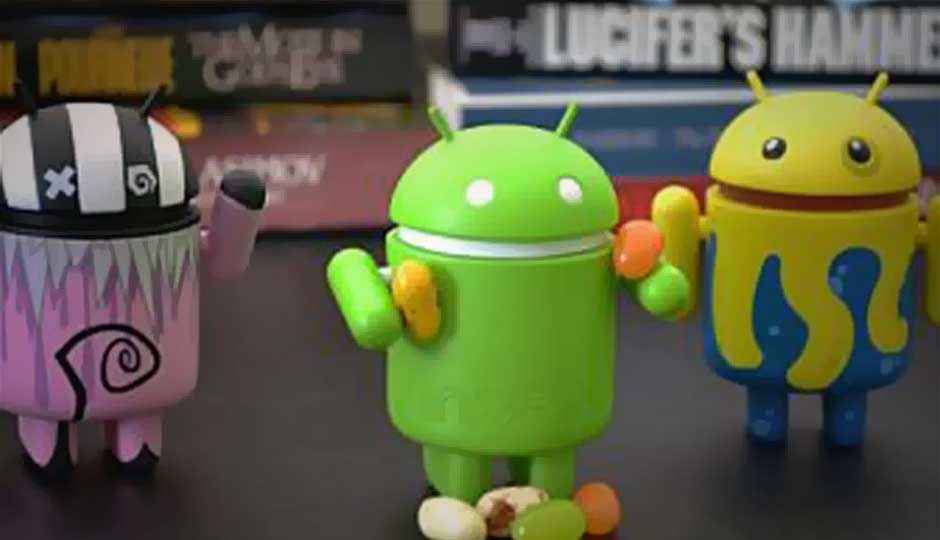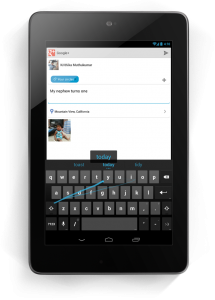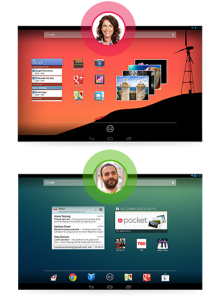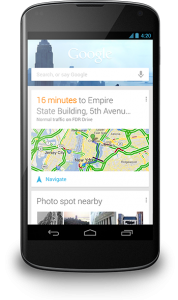Demystifying Android 4.2 Jelly Bean

Android 4.2 is now a reality just four months after version 4.1 was announced. While this is a version number increase, the OS keeps the Jelly Bean moniker in the same way Android 2.0 and 2.1 were both Eclair variants; this is not Key Lime Pie.
 Survey
SurveyBecause of the last minute change in plans, Google’s message has been somewhat scatter-shot when it comes to the new Android software. So let’s go over everything we know.
Pictures and video
There are a few new features coming to the way Android deals with images and video, and the first will take advantage of that new higher-resolution camera in the Nexus 4. Photo Sphere is the natural evolution of Google’s panorama mode first introduced a year ago in Android 4.0. Instead of just rotating your phone along one axis, you can point it anywhere to build an immersive 3D view.
You will center the phone to start a Photo Sphere, then just start moving your viewfinder around and the phone will automatically capture the images it needs to build a full picture. It feels a little like Google Maps Street View where you can pan side to side, as well as up and down. These files are simple JPEGs, so you can save, modify, and share them as you like. XML metadata within the file stores data that allows Photo Spheres shared to Google to be manipulated in real time like a Street View frame.
The other innovation in this area is support for Miracast wireless display technology. You could be forgiven for not being familiar with Miracast — it’s essentially an open alternative to Apple’s AirPlay. It’s based on Wi-Fi Direct, an ad-hoc wireless standard. Basically, anything on your screen can be beamed to a TV, assuming you have compatible hardware. All you need is a display of some sort (like TV) that supports Miracast, or an HDMI adapter that does. You’re more than likely going to have to go with the additional box because Miracast-ready TVs are still rare.
A new keyboard
A few years ago we were wrestling with the barely passable on-screen keyboard (OSK) included with the original Motorola Droid, but things have come a long way since then. In Android 4.2, Google has again stepped it up when it comes to text input. With Android 4.1 Google made offline voice dictation and suggestions its focus. This time Mountain View is looking to put Swype out of business.
Swype is a popular alternative keyboard for Android that allows users to just drag a path from one key to the next in order to spell out words. Swype figures out what word you’re probably spelling, and inserts it. The company has worked long and hard to make this technological voodoo work, and it’s right an astounding amount of the time. Google’s new stock keyboard promises the same functionality, but calls it Gesture Typing.
You will be able to drag your finger around, and the keyboard should figure out what you’re typing, complete with spaces. We won’t know if Google has beaten Swype at its own game until we get some hands-on time, but it’s possible.
Multi-user tablets
The problem with sharing tablets often seems to be that each user has to work around everyone else’s junk. Security is also a concern as all users have access to each other’s files, web history, and email. Starting with Android 4.2, all tablets will finally have multi-user support.
You will be able to switch profiles on the fly from the Android settings. Each user has their own home screens, widgets, apps, and data. This really makes it feasible to share that spiffy new Nexus 10 tablet with your family.
This feature is a big deal not just because it effectively fixes a feature gap in existing tablets, but because Google beat everyone else to the punch. Plenty of iPad users would love to have this feature. Some pages are listing this as a tablet-only feature, which would make sense. However, there are a few screenshots of the Nexus 4 showing a profile menu. Time will tell how this is implemented.
Notifications and lock screen
Google added expandable notifications to Android 4.1, and now the notification area has gotten better still. A new secondary panel in the notification shade allows users to access common settings like WiFi, brightness, Bluetooth, and Profiles from anywhere on the device.
These settings can be accessed in two ways: by tapping the quick settings button in the open notification shade, or by swiping down with two fingers when the shade is closed. A number of popular ROMs and OEM skins like TouchWiz have implemented power bars embedded in the notification panel, but Google’s new implementation keeps those buttons out of the way until you need them.
The lock screen has been tweaked in Android 4.2, but this is one of the changes Google is being less forthcoming about. Some widgets will be allowed to live on the lock screen so you can perform simple functions and view data without unlocking the device. You access most of these widgets by swiping left and right from the main lock screen. We don’t have any firm details on this yet, but stay tuned. Users have been asking for this since the early days of Android.
Google Now
Let’s face the cold, hard truth of things: it’s going to be a while before Android 4.2 reaches your device. Most of the features included in Android 4.2 will be off-limits, but one bit might offer you some hope. If you have Android 4.1 on your phone, the newest improvements to Google Now are coming your way.
Google Now is part of the Google Search app, which is in the Play Store. This won’t deliver Google Now to all devices with Play Store access, but new Google Now features can be added to Jelly Bean devices. Pulling up Now will henceforth include information about hotels, flights, popular photo spots, calendar integration, and concerts.
Google Now also goes deeper into your account, finding tracking data for packages in your email, meeting locations, and more. All this data is integrated into your cards, but can be disabled if you don’t like the creep-factor.
Google has worked to make Android 4.2 more user-friendly, faster, and even more feature-complete than 4.1 was. There’s a lot to like, but OEMs have barely gotten Android 4.1 updates going and here Google comes with even better software. If you want to enjoy all that the new Jelly Bean has to offer, a Nexus device is probably the way to go. Fortunately, Google released a new Nexus 4 smartphone and Nexus 10 tablet yesterday, too.
Copyright © 2010 Ziff Davis Publishing Holdings Inc




